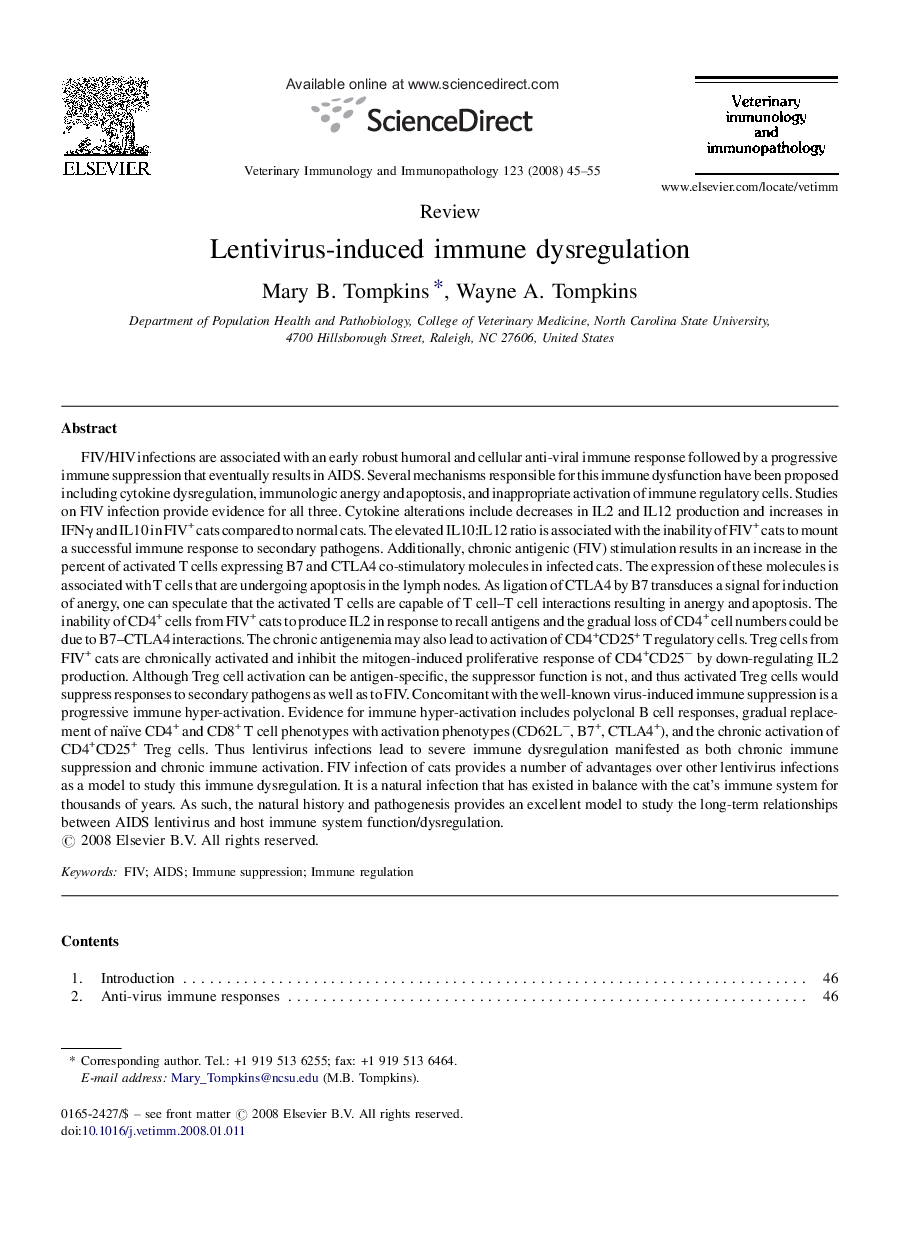| کد مقاله | کد نشریه | سال انتشار | مقاله انگلیسی | نسخه تمام متن |
|---|---|---|---|---|
| 2463075 | 1555100 | 2008 | 11 صفحه PDF | دانلود رایگان |

FIV/HIV infections are associated with an early robust humoral and cellular anti-viral immune response followed by a progressive immune suppression that eventually results in AIDS. Several mechanisms responsible for this immune dysfunction have been proposed including cytokine dysregulation, immunologic anergy and apoptosis, and inappropriate activation of immune regulatory cells. Studies on FIV infection provide evidence for all three. Cytokine alterations include decreases in IL2 and IL12 production and increases in IFNγ and IL10 in FIV+ cats compared to normal cats. The elevated IL10:IL12 ratio is associated with the inability of FIV+ cats to mount a successful immune response to secondary pathogens. Additionally, chronic antigenic (FIV) stimulation results in an increase in the percent of activated T cells expressing B7 and CTLA4 co-stimulatory molecules in infected cats. The expression of these molecules is associated with T cells that are undergoing apoptosis in the lymph nodes. As ligation of CTLA4 by B7 transduces a signal for induction of anergy, one can speculate that the activated T cells are capable of T cell–T cell interactions resulting in anergy and apoptosis. The inability of CD4+ cells from FIV+ cats to produce IL2 in response to recall antigens and the gradual loss of CD4+ cell numbers could be due to B7–CTLA4 interactions. The chronic antigenemia may also lead to activation of CD4+CD25+ T regulatory cells. Treg cells from FIV+ cats are chronically activated and inhibit the mitogen-induced proliferative response of CD4+CD25− by down-regulating IL2 production. Although Treg cell activation can be antigen-specific, the suppressor function is not, and thus activated Treg cells would suppress responses to secondary pathogens as well as to FIV. Concomitant with the well-known virus-induced immune suppression is a progressive immune hyper-activation. Evidence for immune hyper-activation includes polyclonal B cell responses, gradual replacement of naïve CD4+ and CD8+ T cell phenotypes with activation phenotypes (CD62L−, B7+, CTLA4+), and the chronic activation of CD4+CD25+ Treg cells. Thus lentivirus infections lead to severe immune dysregulation manifested as both chronic immune suppression and chronic immune activation. FIV infection of cats provides a number of advantages over other lentivirus infections as a model to study this immune dysregulation. It is a natural infection that has existed in balance with the cat's immune system for thousands of years. As such, the natural history and pathogenesis provides an excellent model to study the long-term relationships between AIDS lentivirus and host immune system function/dysregulation.
Journal: Veterinary Immunology and Immunopathology - Volume 123, Issues 1–2, 15 May 2008, Pages 45–55